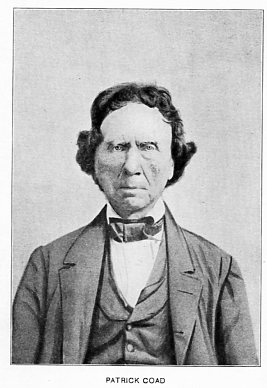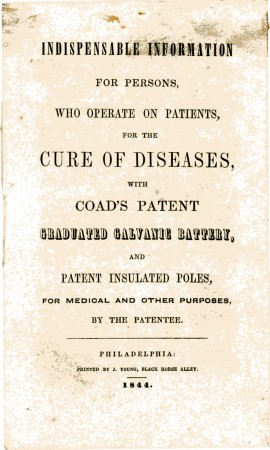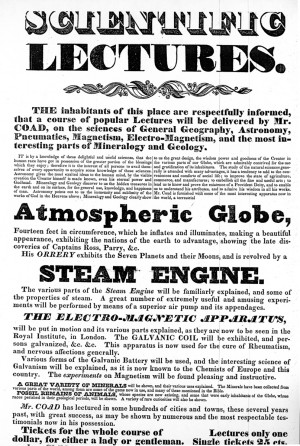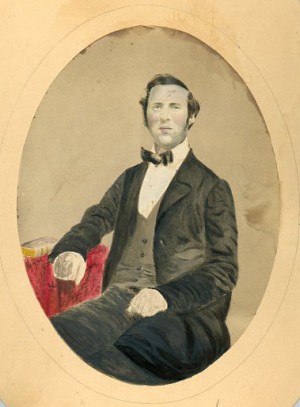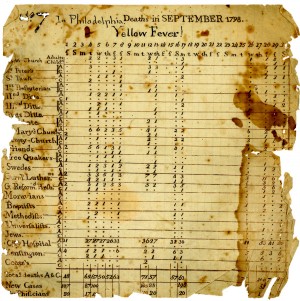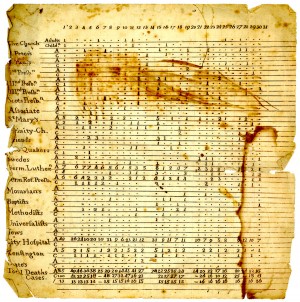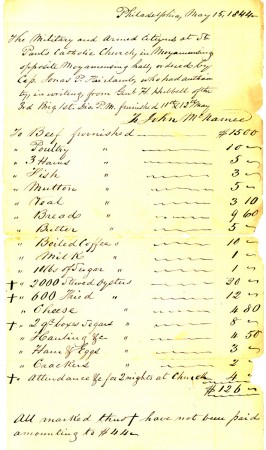I am almost finished processing a small collection, Patrick Coad Family Papers (MC 37). An online finding aid will soon be available.
Patrick Coad (1783-1872), an Irish immigrant who settled in Philadelphia, was the first American patentee of a graduated galvanic battery with insulated poles. Coad was a noted teacher and lecturer of medicine and the natural sciences, but gained wider notoriety after he invented and patented his galvanic battery in March 1842. The patent Coad received was for the “improvement in the mode of constructing the galvanic battery so as to vary the intensity of its effect, and in the construction of insulated conductors applied to the same for adapting it to medical purposes.” The instrument, which Coad and others touted as one that helped cure various diseases, garnered a good deal of attention within the medical community, which at the time was very interested in the use of electricity and magnetism for medical treatment.
The collection includes some of Coad’s correspondence, his lecture notes and medical remedies, testimonials noting the capabilities of his galvanic battery, as well as related ephemera. Ephemeral materials include newspaper clippings, pamphlets and broadsides publicizing his invention, lectures, as well as the school that Coad opened for boys and girls. Also included in the collection is correspondence, ephemera, some estate items, and a scrapbook relating to Patrick Coad’s family, including his son Joseph R. Coad (1829-1868), a prominent Philadelphia physician who served as president of the city’s Board of Health.
Thus far, I have found that manuscript collections, particularly collections of family papers, often have some interesting miscellaneous items that seemingly have nothing to do with the family that is being documented. This collection is no exception. The following are two items that I felt warranted some attention:
1. A document listing the number of those in the city who died during the Yellow Fever epidemic in (possibly?) August and September 1798. The deaths are broken down by religion, church, and section of the city. (These obviously are in need of conservation!)
2. The other item of interest is another list, this one a list of food items requested by military personnel and civilians who were stationed at St. Paul’s Church during the first phase of the Nativist riots in May 1844. After violence had spread from Irish Kensington to the city of Philadelphia itself, authorities and citizens finally took action. On Thursday, May 9, Philadelphia County was placed under martial law. Several thousand of the city’s elite formed into divisions of “Peace Police” and assisted the militia in guarding the Catholic churches of the city for the next several days.
It appears as if these soldiers and citizens were not going to defend their city without proper nourishment, which included ham, veal, poultry, eggs, 10 pounds of sugar, and 2,000 stewed and 600 fried oysters. Oh yes, and don't forget the segars.


